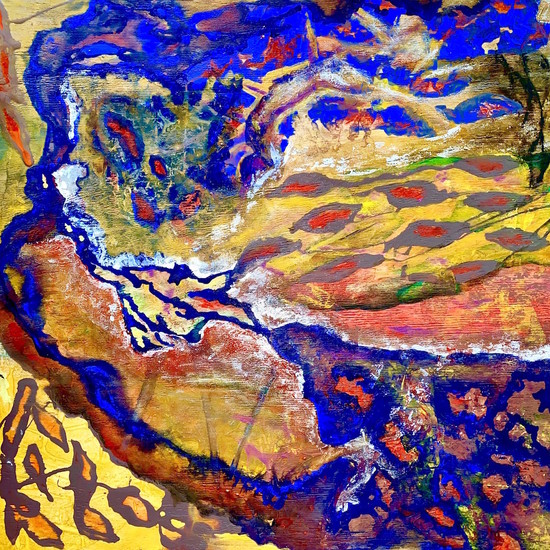Gestalt is an act that creates instrumental music. Just what style of music this group creates, however, is up for a debate. This is because a bevy of styles get thrown together, and Gestalt can be many different groups, depending upon which particular track you’re listening to. With that said, though, no matter the flavor, everything this act creates tastes pretty good.

The album’s title, Debussy’s Fawn, likely makes you immediately think of classical music. The Debussy referenced in the album title is Claude Debussy, a French musician sometimes referred to as the first impressionist composer. He created music toward the end of the 19th century, and on into the 20th century. “Rabbit in a Snowstorm, Part 1,” with its sometimes-romantic violin part, is one of these six pieces that leans toward classical. There is much interplay between violin and piano on it, but no drumming. The piece is followed by two more parts to the trilogy, “Rabbit in a Snowstorm, Part 2” and “Rabbit in a Snowstorm, Part 3.” This first section, while mainly built with two instruments oftentimes associated with classical composition and performance, also has a touch of the avant-garde running through it, as well. It includes herky-jerky sections, and rhythmic repeated notes. At eight minutes and forty-six seconds, this one is also the longest piece on the project.
“Rabbit in a Snowstorm, Part 2,” however, ditches the violin for a primarily solo piano piece. In places, this track reminds one of Keith Jarret music. Jarret also smartly sidestepped easy categorization with his music, sometimes sounding like a jazz pianist, other times exhibiting more traits aligned with classical composers. This piece also relies upon an upfront percussion pattern.
With “Rabbit in a Snowstorm, Part 3,” Gestalt moves away – far away – from its more experimental side and closes out the album with a relatively hum-able tune that includes melodic piano and violin. You might even say this track swings.
The album opens with another nature-related title, this time “The Frog’s Song.” It is quiet, sweet and plays out like a lullaby It’s not confrontational, the way so much of the album’s second half comes off. The piano is pretty sounding throughout. One titled “Church Music” makes it a little tough to see this music’s connection to church. It’s not particularly hymn-like, nor is it especially Black gospel-y. It’s also, at 6:14, the second longest track on the project. The piece builds up to a bold, piano-based stormy tune.
The album’s title track begins with acoustic piano and acoustic bass. Although the band might not appreciate this comparison, its melody sounds a bit like George Winston’s new age piano pieces back in the 80s. This, however, is a far more complex piece of music than the sounds that made Winston famous.
https://www.instagram.com/musicbygestalt/
There’s much to digest with Debussy’s Fawn. It’s more complicated than much of today’s jazz, and worlds away from the smooth jazz variety. With some of its more minimalist recordings, Gestalt can oftentimes sound like Dave Brubeck, who was – we now realize – way ahead of his time. Brubeck was a jazz player that created what oftentimes sounded like chamber music. He walked in two worlds, as well as one of his very own making, and it’s safe to say Gestalt is much the same in that regard. It’s not easy listening, but it’s always good listening.
-Dan MacIntosh
